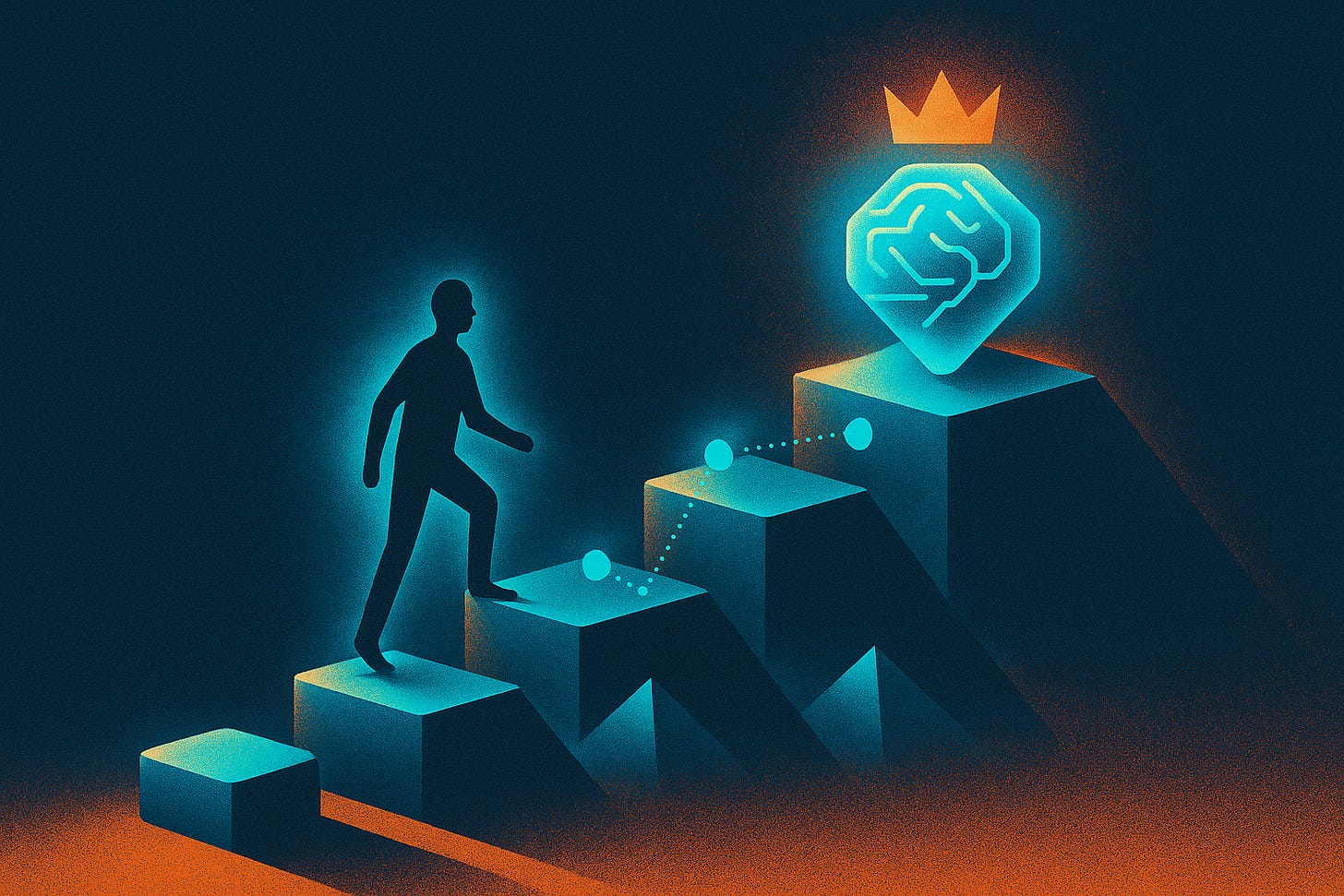How to Go From AI Beginner to Pro in 2025
A non-technical guide for professionals who want to master AI
Previously, I wrote about how to go from ChatGPT beginner to pro.
Today’s article is about mastering AI, not just a single tool. Whether you’re just getting started or already using AI daily, I’ll show you a clear path from basic tool use to building custom workflows that professionals and business leaders can use to turn AI into a genuine competitive advantage.
Here’s the four-stage framework.
Table of content:
- Stage 1: Learning AI tools (where most people are)
- Stage 2: Develop AI Literacy
- Stage 3: Use AI as a thought partner
- Stage 4: Build AI workflows
What stage you're in? Let me know in the comments
Note: This is a no-code guide on how to master AI. If you want a technical guide on how to learn AI, check out this article I wrote.
Stage 1: Learning AI tools (where most people are)
You should prioritize the 2-3 tools that will create an immediate impact in your daily work. Some people waste time experimenting broadly when they should focus on tools that directly serve their strategic priorities.
I’ll help you identify the most relevant tools for you. AI tools are split into two categories:
General-Purpose Tools: Tools that can handle multiple tasks (text, image, etc)
Task-Specific Tools: Tools that were designed for one specific task
Pick one general-purpose tool
The most popular choice is ChatGPT, but Gemini and Claude are also good. For beginners, there isn’t a big difference between these three tools. Still, here are some things to keep in mind:
ChatGPT: It has a rich feature set (voice/video mode, image/video generation, etc)
Gemini: Similar to ChatGPT + integration with Google products (Docs, Sheets,etc)
Claude: It excels at writing and coding (it doesn’t support image/video generation)
Which general-purpose tool do I use?
I mostly use ChatGPT, while I used Claude and Gemini for some specific tasks. That said, if you’re a beginner, it doesn’t matter what tool you choose. It’s more important to stick to one tool for some time to understand the core concepts.
Learn a few task-specific tools
Task-specific tools are designed with a particular niche in mind. Before adopting one, follow these steps:
Identify your needs
Find what tools can cover those needs
Compare them and learn to use the winner tool
Recommending task-specific tools is a bit tricky because we have different goals. Here’s my personal AI tool stack (with links to check them out):
Your AI tool stack doesn’t have to look like mine. Build one yourself. I think some essential task-specific tools for professionals are NotebookLM and Deep Research (more details here)
Who needs to go beyond stage 1?
Stage 1 is where most people are, and there’s nothing wrong with that if you’re a casual user who proofreads emails, generates images/videos once in a while, etc.
However, if you want to master AI, you need more. That’s what we’ll cover in the next stages:
Stage 2: It’s about developing AI literacy to feel confident when using AI and talking about it
Stage 3: How to use AI as a thought partner, so you quickly get a broader perspective and make better decisions without outsourcing judgment (+copy & paste prompts)
Stage 4: It’s about building AI workflows that multiply your output and save time every week
Stages 2, 3, and 4 aren’t for casual AI users, but for professionals and business leaders who want to turn AI into a genuine competitive advantage. If you’re in that group, keep reading 👇
Paid-members only :)
100% of my content on YouTube and social media is free because of the 1% supporting me. Become one of them

